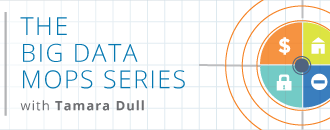When a company decides they want to transition to a private cloud, there are a few important steps they need to take to get started:
When a company decides they want to transition to a private cloud, there are a few important steps they need to take to get started:
- In-house vs. outsource – The first step is to decide if you want to keep your IT in-house or outsource your IT services to a managed cloud or data center provider. If you have difficulty deciding, first answer – Do you have the expertise or experience with virtualization to do it yourself, or would it be best to outsource to a specialized company?
- Determine IT costs and plan – Weigh your company’s current strategic IT mission and plan, cost, and the security and resiliency need for your applications. This is critical to the next two steps, when determining your server and platform specs.
- Review specs of your host server – Decide on a uniform processor speed, since parity in all of your host server boxes is important. While it’s easy to add more RAM or a new processor, adding or replacing local disk can be more complex.
- Review specs of your virtualization platform – Do you want the comfort of using a well-known brand name such as VMware, or do you need something more affordable like Microsoft’s Hyper-V? Consider your IT budget.
- Consider using a SAN (Storage Area Network) – If you consolidate all of your data on your virtual servers to a single storage platform, you’ll have the capability to move virtual servers from one box to another, allowing for optimal use of your server resources. You can monitor, configure and manage automatically; as well as enable automatic failover to another host should one host fail.
- Implement an IT disaster recovery plan – Determine what level of disaster protection your data needs – consider offsite backup in a separate location in the event that something happens to your primary site. If you’ve chosen an outsourced private cloud, your provider may have a cost-effective cloud disaster recovery plan available. SAN-to-SAN replication can also deliver fast recovery times and failback to production.
While setting up the cloud, whether a managed or a private cloud, the most important fact is your cloud doesn’t have to be built in one day – you always have the flexibility to customize, scale up or down, and add hosts to align with company demand. The great part about a cloud is the ability to grow without replacing old hardware or wasting capital.
Consider taking the first few steps to adopting the cloud to realize cost savings, fast server deployment, and disaster recovery options.
Get more details on The Road to the Private Cloud: How to Make the Transition.







